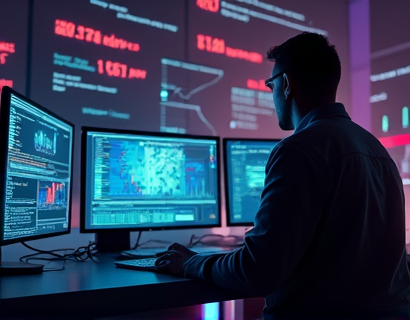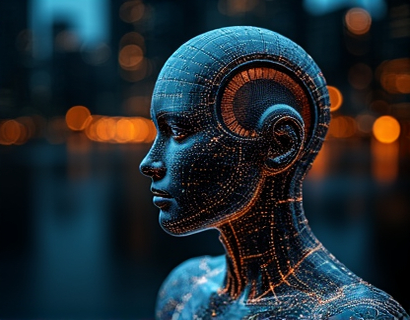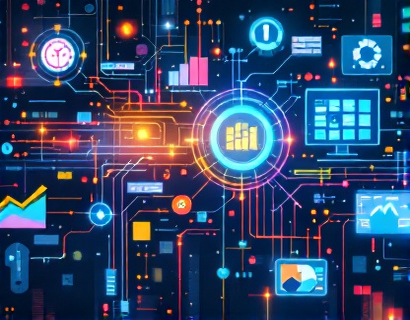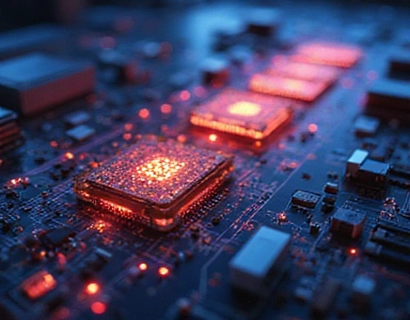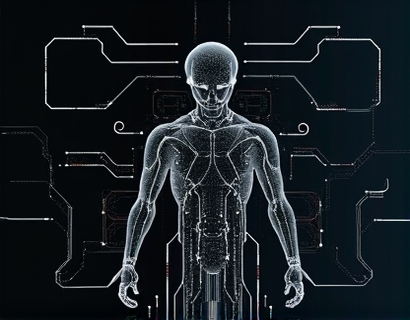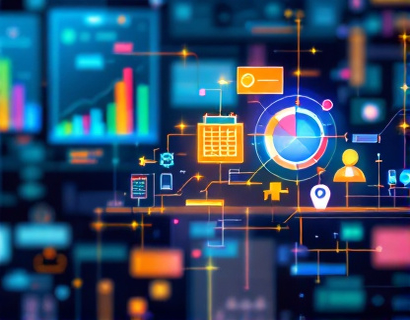Unlocking Enhanced Digital Experiences: Leveraging AI and Crypto for Next-Gen Transformation
The digital landscape is undergoing a profound transformation, driven by the convergence of artificial intelligence (AI) and cryptocurrency. This synergy opens up new avenues for innovation, growth, and enhanced user engagement. By understanding how these technologies can be leveraged together, businesses and developers can gain a competitive edge in the rapidly evolving tech environment. This article delves into the ways AI and crypto can be combined to unlock next-generation digital experiences, benefiting both creators and users alike.
Understanding AI and Crypto: The Foundation of Next-Gen Digital Transformation
To fully appreciate the potential of merging AI and crypto, it's essential to first understand each technology individually. Artificial intelligence, a branch of computer science, focuses on creating systems that can perform tasks requiring human intelligence, such as learning, reasoning, and problem-solving. AI technologies include machine learning, natural language processing, and computer vision, which are increasingly integrated into various applications and services.
Cryptocurrency, on the other hand, is a digital or virtual currency that uses cryptography for security and operates on a decentralized network, typically a blockchain. Bitcoin, the first and most well-known cryptocurrency, paved the way for thousands of alternative coins and tokens, each with unique features and use cases. The decentralized nature of crypto ensures transparency, security, and trust without the need for intermediaries.
The intersection of AI and crypto creates a powerful combination. AI can enhance the functionality and efficiency of blockchain networks, while crypto can provide secure and transparent mechanisms for AI systems to operate. This synergy is paving the way for innovative solutions that can transform industries and enhance digital experiences.
Enhancing Security and Trust with Crypto
One of the most significant advantages of integrating crypto into AI-driven systems is the enhancement of security and trust. Blockchain technology, the backbone of most cryptocurrencies, offers a tamper-proof and transparent ledger. This ensures that data transactions are secure and immutable, reducing the risk of fraud and data breaches. For AI applications that handle sensitive user data, such as personal information or financial transactions, this level of security is crucial.
Smart contracts, self-executing contracts with the terms directly written into code, can automate and enforce agreements between parties without the need for intermediaries. This not only reduces costs but also ensures that all parties adhere to the agreed terms, fostering trust and reliability. In the context of AI, smart contracts can automate data sharing, access control, and reward mechanisms, streamlining complex processes and enhancing user trust.
Improving Data Management and Privacy
AI systems rely heavily on data to function effectively. However, managing and protecting this data is a significant challenge. Crypto technologies, particularly zero-knowledge proofs and homomorphic encryption, offer solutions to these challenges. Zero-knowledge proofs allow one party to prove to another that a statement is true without revealing any information beyond the truth of that statement. This ensures that sensitive data remains private while still being usable for AI algorithms.
Homomorphic encryption enables computations on encrypted data without first decrypting it. This means that AI models can process and analyze data while it remains in an encrypted state, ensuring that the data's confidentiality is maintained. This is particularly important for applications in healthcare, finance, and other sectors where data privacy is paramount. By combining AI and crypto, organizations can leverage data for AI advancements while respecting user privacy.
Optimizing Performance and Efficiency
AI algorithms, especially those used in large-scale applications, require significant computational resources. Crypto technologies, particularly those related to distributed computing and decentralized networks, can optimize the performance and efficiency of these algorithms. For instance, decentralized computing platforms can distribute AI workloads across multiple nodes, reducing the load on any single system and improving processing speed.
Moreover, the use of blockchain-based marketplaces for computational resources allows AI developers to access a global pool of processing power. This not only reduces costs but also enhances the scalability of AI applications. By leveraging crypto-driven decentralized networks, AI systems can operate more efficiently, leading to faster and more accurate results.
Enhancing User Engagement and Personalization
One of the key benefits of combining AI and crypto is the ability to create highly personalized and engaging user experiences. AI algorithms can analyze user behavior and preferences to deliver tailored content, recommendations, and services. However, ensuring the security and privacy of user data is crucial for maintaining user trust. Crypto technologies provide the necessary tools to achieve this balance.
For example, decentralized identity solutions can give users control over their digital identities, allowing them to share specific pieces of information with AI systems while keeping other data private. This empowers users and enhances their experience by providing relevant and personalized interactions. Additionally, token-based reward systems can incentivize user participation and engagement, creating a more interactive and rewarding environment.
Fostering Innovation and Collaboration
The integration of AI and crypto fosters a culture of innovation and collaboration. Developers and businesses can build on open-source blockchain platforms and AI frameworks, contributing to a vibrant ecosystem of shared knowledge and resources. This collaborative approach accelerates the development of new technologies and applications, driving the industry forward.
Moreover, the decentralized nature of crypto encourages a more democratic and inclusive approach to innovation. Smaller players and individual developers can participate in the ecosystem, bringing diverse perspectives and ideas. This democratization of technology can lead to breakthroughs that might not have been possible in a more centralized environment.
Case Studies and Real-World Applications
Several projects and platforms are already demonstrating the potential of combining AI and crypto. For instance, decentralized finance (DeFi) platforms use AI to optimize trading strategies and risk management, while ensuring transparency and security through blockchain. These platforms allow users to access financial services without traditional intermediaries, reducing costs and increasing accessibility.
In the realm of content creation, AI-powered content generation tools can be combined with crypto to create decentralized content marketplaces. These platforms use blockchain to ensure fair compensation for creators and transparent transactions for users. AI can curate and recommend content based on user preferences, enhancing the overall user experience.
Another example is the use of AI in supply chain management, where blockchain ensures traceability and transparency. AI algorithms can predict demand, optimize inventory, and identify bottlenecks, while blockchain provides an immutable record of transactions and movements. This combination leads to more efficient and reliable supply chains.
Challenges and Considerations
While the potential of merging AI and crypto is vast, there are several challenges and considerations to keep in mind. One of the primary challenges is the technical complexity involved in integrating these technologies. Developers need a deep understanding of both AI and blockchain to effectively combine them. Additionally, the regulatory landscape for crypto is still evolving, and compliance can be a significant hurdle.
Another consideration is the energy consumption associated with blockchain networks, particularly those using proof-of-work consensus mechanisms. The environmental impact of crypto mining is a growing concern, and the industry is moving towards more sustainable solutions like proof-of-stake. AI developers should also be mindful of the ethical implications of using AI, ensuring that their systems are fair, transparent, and free from bias.
Conclusion
The convergence of AI and crypto represents a transformative force in the digital world. By leveraging the strengths of both technologies, we can unlock new possibilities for innovation, growth, and enhanced user engagement. The combination of AI's intelligence and crypto's security and transparency paves the way for next-generation digital experiences that are secure, efficient, and personalized. As the tech landscape continues to evolve, embracing this synergy will be crucial for staying ahead of the curve and driving meaningful change.



